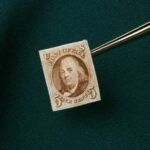Forever stamps have become a staple in the lives of everyday Americans, simplifying how we pay for postage without the constant worry of rate increases. Introduced by the United States Postal Service (USPS) in 2007, the purpose of these stamps was to offer flexibility, ease of use, and protection against future postal rate hikes. The concept was simple yet brilliant — a stamp that retains its mailing value indefinitely, regardless of future price changes. But as common as these stamps are today, many people still find themselves asking: do forever stamps expire?
The answer to that question is both straightforward and reassuring. Forever stamps do not expire, and their value remains intact even decades after purchase. Whether you bought them last year or in 2007, they will still cover the cost of sending a standard first-class letter within the United States. However, to fully understand the nuances, it’s essential to explore how these stamps work, their history, and the situations where additional postage may be required.
A Brief History of Forever Stamps
The forever stamp was launched by the USPS on April 12, 2007, with the iconic image of the Liberty Bell. At the time, the cost of a first-class stamp was 41 cents. The idea behind the forever stamp was to allow customers to purchase postage that would retain its value for a standard letter, even if rates increased in the future. The initiative gained rapid popularity among consumers who found it easier to buy and store stamps without worrying about 1-cent or 2-cent add-ons when postage rates rose.
By 2011, the USPS had expanded the use of the Forever designation to cover all first-class one-ounce stamps. This change simplified the entire mailing process, reducing the need for small-denomination stamps and making inventory management easier for retailers and the USPS alike.
Why Forever Stamps Never Expire
At the heart of the forever stamp is its ability to retain mailing value over time. These stamps are not tied to a monetary amount, such as 63 cents or 66 cents. Instead, they are tied to the current rate of mailing a first-class one-ounce letter. That means if you purchased a forever stamp in 2007 when postage was 41 cents, and the rate today is 68 cents, your stamp will still fully cover the cost of mailing that same first-class letter.
This feature offers incredible flexibility, especially for individuals who buy stamps in bulk or rarely send mail. There’s no need to monitor rate changes constantly or worry that your stockpile of stamps has become obsolete.
Situations Where Forever Stamps Might Not Be Enough
While forever stamps are convenient, there are scenarios where using just one may not suffice. It’s important to understand these exceptions to avoid issues like returned or delayed mail.
For example:
- Heavier Mail: If your letter exceeds one ounce, you’ll need to add extra postage, even if you’re using a forever stamp.
- Large Envelopes or Flats: Sending an oversized or non-standard envelope may require additional postage.
- International Mail: Forever stamps only cover domestic first-class mail. For international destinations, you’ll need Global Forever stamps or additional postage to meet current international rates.
- Special Services: If you’re requesting services such as tracking, certified mail, or insurance, a forever stamp won’t cover those extra fees.
In such cases, it’s crucial to consult with USPS guidelines or visit a local post office to determine the correct amount of postage needed.
How to Recognize a Forever Stamp
Forever stamps are easily identifiable. While they don’t have a denomination printed on them, they usually include the word “Forever” somewhere near the design, along with “USA.” They are often adorned with patriotic themes, nature, holidays, or notable American figures. Despite the absence of a price, they remain valid for the current first-class rate.
This design feature also ensures that old forever stamps — even those bought over a decade ago — are still recognized and accepted by the USPS. There’s no need to trade them in or have them revalued. Just stick them on your envelope and drop it in the mailbox.
The Economic Benefit of Stockpiling Forever Stamps
One reason forever stamps are popular is that they can offer a hedge against inflation. Postal rates tend to rise over time, even if only by a few cents every couple of years. By purchasing a large quantity of forever stamps at today’s rate, consumers can potentially save money in the future.
For instance, if you bought 100 forever stamps at 55 cents each and the rate later increased to 68 cents, you’d effectively be saving 13 cents per stamp on future mail. Multiply that across hundreds of letters, and the savings can be substantial, particularly for businesses or frequent mailers.
Can Forever Stamps Be Used Indefinitely?
The simple answer remains yes. There’s no expiration date, and USPS has made no indication of phasing out forever stamps. They are as good today as they were the day you bought them. Even if design changes occur or new stamp styles are introduced, existing forever stamps remain valid for mailing purposes.
That said, it’s always best to ensure stamps are in good condition. Stamps that are torn, badly damaged, or covered in adhesive or ink may not be accepted by sorting machines. As long as your stamp is intact and unused, it should be perfectly valid.
Global Forever Stamps: A Similar Concept for International Mail
In 2013, USPS introduced Global Forever Stamps, a variation designed for sending one-ounce letters internationally. Just like their domestic counterpart, these stamps retain their value over time and can be used even if international rates increase in the future.
Global Forever Stamps currently feature designs such as the Earth or international symbols and are priced higher than domestic forever stamps to reflect global postage rates. They too never expire and can be used in combination with other stamps to meet mailing requirements for heavier or non-standard international mail.
Common Myths About Forever Stamps
There are a few misconceptions floating around that may confuse stamp users:
- Myth 1: Forever stamps expire after a certain number of years.
False. USPS has clearly stated that forever stamps do not have an expiration date. - Myth 2: Old forever stamps need to be revalued or updated.
Also false. There’s no need to validate or exchange older stamps. They’re still fully functional. - Myth 3: Forever stamps can only be used for personal mail.
Incorrect. Businesses and individuals alike use forever stamps for all types of first-class mail.
Understanding these myths is important to avoid unnecessary trips to the post office or extra postage costs.
Where to Buy Forever Stamps
Forever stamps are widely available across the U.S. You can purchase them directly at:
- USPS retail locations
- The official USPS website
- Grocery stores and big-box retailers like Walmart or Costco
- Online marketplaces (with caution to avoid scams or counterfeits)
If buying online from third-party sources, make sure you’re purchasing from trusted sellers to avoid counterfeit stamps, which have become increasingly common.
Conclusion: A Timeless Postal Investment
So, do forever stamps expire? The answer remains a confident no. They are a dependable, cost-effective tool for mailing in an age where postal rates continue to shift. Designed with simplicity and consumer convenience in mind, forever stamps have eliminated the need to constantly monitor pricing changes or worry about the relevance of your old stamps. Whether you’re sending birthday cards once a year or running a small business with weekly mailings, these stamps offer unmatched flexibility and peace of mind.
May Also Read: tuguiausa







